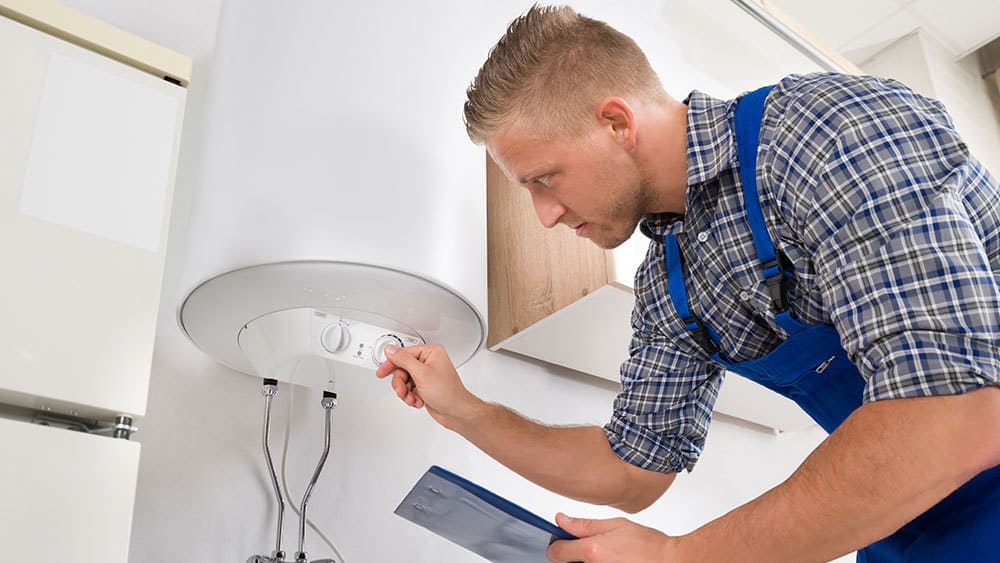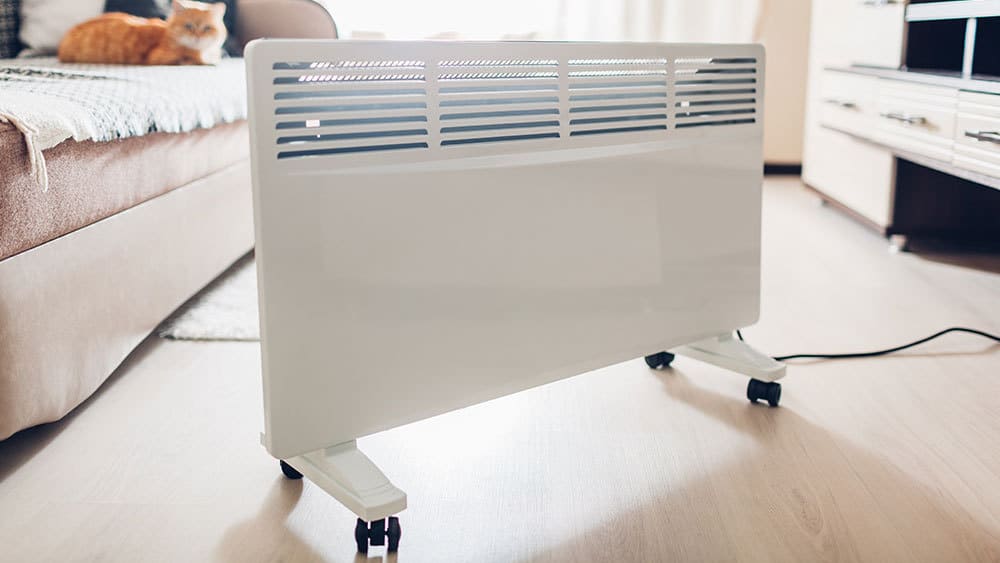
Key Takeaways
- Smart heating systems let you control your home’s temperature remotely.
- Smart heating help reduce energy waste, cut heating costs, and improve overall home efficiency.
- From smart thermostats to smart radiators, there’s a smart heating solution for every home.
Smart heating systems have changed how you heat your home by offering more control, efficiency, and comfort. From learning your preferences to saving energy, they offer a lot more than traditional systems.
This blog will discuss some of the top smart heating systems available and why they are the perfect addition to any home looking to improve comfort and efficiency.
- What Is Smart Heating?
- 1. Smart Thermostats for Central HVAC
- 2. Mini-Split Thermostat for Ductless Heat Pumps
- 3. Smart Mini-Split Heat Pumps
- 4. Smart Water Heater
- 5. Smart Space Heater
- 6. Smart Heating Fireplaces
- 7. Smart Vents
- 8. Smart Radiator Valves
- 9. Smart Electric Radiators
- Benefits of Smart Heating
- In Conclusion
What Is Smart Heating?
Smart heating eliminates the constant need for you to monitor and fine-tune the temperature in your home. A smart heating device does it for you—automatically! Even though the exact mode of operation and type of smart heating device can vary, all smart devices have one thing in common: Wi-Fi connectivity. They can connect to the internet and, with the help of a mobile application, be controlled from your smartphone.
You can do this from anywhere in the world, as long as you have an internet connection. This is the essence of smart heating. Moreover, convenience and comfort are just one part of the equation. Energy savings are the other; depending on the exact type of device, smart heating can provide 10-20% energy savings. Smart features like adaptive heating, automated temperature adjustments, and predictive controls help maintain your indoor climate while ensuring savings.
Smart heating refers to a range of devices and systems that use Wi-Fi connectivity for remote control and automation. Here are some of the most popular options:
1. Smart Thermostats for Central HVAC
A smart thermostat for central HVAC provides unparalleled comfort and convenience. These devices connect to Wi-Fi, allowing you to adjust temperature settings remotely through a smartphone app or voice commands via smart assistants like Alexa or Google Assistant.
Equip your HVAC system with smart features and achieve the perfect balance between comfort & savings.
Learn more
These thermostats come with numerous features that can take your climate control to another level. The scheduling features allow you to pre-program the heating to run at certain times of the day only so that you do not have to turn the heating constantly on or off.
Geofencing is another helpful feature that creates a virtual boundary around your home. When you leave this area, the thermostat automatically switches to an energy-saving temperature, and as you return, it switches to your preferred settings. The usage history statistics provide an overview of your HVAC system, allowing you to make decisions that can save even more energy.
Some smart thermostats provide a vacation mode, allowing you to set your system to run at a lower temperature while you’re away. This helps conserve energy and protect your home by preventing issues like frozen pipes. Using this mode, you can leave with peace of mind to enjoy the chilly weather.
Related: What Temperature to Keep Your House While on Vacation?
2. Mini-Split Thermostat for Ductless Heat Pumps

You can make your ductless heat pump smart with a mini-split thermostat that works seamlessly with your ductless systems and lets you operate your unit from your smartphone.
Your best choice to make any mini-split, window,
or portable AC smart. Enhance your comfort and savings.

These smart devices offer numerous features to help you stay warm and cozy while saving energy. By setting daily or weekly schedules, you can avoid constant adjustments, saving both time and energy. With geofencing mode, your mini-split automatically shuts down when you head out and turns back on when you are near your home. No more rushing back home from your grocery shopping to check whether you turned your unit off! Cielo Breez Max has an advanced feature called Comfy Max. It uses AI-based intelligent algorithms to maintain your predefined room temperature and prevent overheating/overcooling.
With mini-split thermostats, you can also control your unit using voice commands through Alexa, Google Home, SmartThings, etc.
3. Smart Mini-Split Heat Pumps
Smart mini-split systems are a fantastic choice for your home offering convenience and efficiency. These devices connect to Wi-Fi, allowing you to monitor and manage them remotely using a smartphone app. You can also connect them with smart home systems or voice assistants like Alexa or Google Assistant.
They provide numerous smart features, like scheduling, where you can set specific times for your heat pump to operate based on your daily routine. You can also have your unit automatically turn on or off when you leave or return home. This not only saves energy but also ensures your home is comfortable when you return.
While these systems may have a higher upfront cost, their intelligent features can lead to significant savings on your monthly energy bills over time.
Related: Why Is My Electric Bill So High? 11 Reasons & How to Lower It
4. Smart Water Heater

Smart water heaters take the functionality of traditional water heaters to the next level by incorporating advanced technology.
These systems allow you to monitor and control water heating remotely. Using a smartphone app, you can easily turn the water heater off during inactive periods, such as work hours, and back on just in time for use, such as an hour before your morning shower.
Over time, they adapt to your household’s usage patterns, predicting when hot water will be needed. During periods of inactivity, the system lets the water temperature naturally decrease within a set range, preventing unnecessary energy consumption.
A smart heater also provides peace of mind by timely informing you of any problem with the unit. If an issue arises, such as a leak or system malfunction, the system sends alerts directly to your app.
5. Smart Space Heater

Space heaters are a convenient and affordable way to stay warm during winter. They are designed to heat small rooms or specific areas. You can also use them as a supplement heating alongside your main heating system.
A smart space heater adds even more convenience to your home. It can connect to your Wi-Fi and be controlled from your phone. Many models also integrate with voice assistants, letting you warm up a room with just a simple command.
It provides more precise temperature control, enabling you to tailor the room’s comfort level to your exact preference. Some even feature energy-saving modes that adjust heat and power settings to conserve energy once the room reaches the desired temperature. Additionally, smart space heaters may include safety features like an electronic tip-over function that automatically shuts off the heater and sends you a notification if it’s tipped over.
6. Smart Heating Fireplaces

Fireplaces have been in the picture for as long as heating has been a requirement in homes. A fireplace serves as both a heat source and a familiar spot. It also serves as a place where a family can sit during evenings and chat. The light and heat from your fireplace help to make the room cozy and comfortable, but you have to control them manually.
That’s where smart fireplaces come in. With smart tech, you can control your fireplace with your phone and keep the temperature always within your preferred range. You can do that without having to get up and fiddle around constantly. Most smart fireplaces also have many safety features, such as carbon dioxide detectors, sensors to detect liquid fuel levels, and heat output measurement devices to prevent overheating.
7. Smart Vents
Smart vents are advanced devices designed to optimize airflow from your HVAC system, allowing precise control over the temperature in individual rooms. These vents can be managed through schedules you set or automatically adjusted based on room conditions with the help of proximity and motion sensors.
With smart vents, you can customize the climate in every room of your home. For instance, if you prefer a warmer temperature in your bedroom without affecting other areas, the system redirects airflow to maintain the desired settings in that space. This ensures personalized comfort and improves overall energy efficiency by heating or cooling only the areas that need it.
8. Smart Radiator Valves
Smart radiator valves are advanced devices that can be attached to your radiator to control and optimize the heating in individual rooms. They replace traditional manual valves and allow you to adjust the temperature remotely. They can also be programmed to run at your preferred scheduled times.
These smart valves automatically regulate hot water flow to each radiator once the surrounding air reaches the desired temperature. This eliminates the need for manual adjustments and ensures your rooms stay comfortably warm without overheating.
9. Smart Electric Radiators
Smart electric radiators are a great investment for your home. They are equipped with advanced features like Wi-Fi connectivity, app control, and energy-saving capabilities. These radiators allow users to adjust temperature settings, create heating schedules, and monitor energy usage remotely via a smartphone or compatible smart home system. They ensure a comfortable home environment while also ensuring energy savings.
Benefits of Smart Heating
-
Save Energy and Cut Costs
Smart heating devices are designed to optimize heating by turning off your systems when no one is home, lowering temperatures in unused rooms, and sending real-time alerts. This helps minimize energy waste and lower heating costs while ensuring a comfortable home environment.
-
Smart Home Integration
Smart heating connects to Wi-Fi and integrates voice assistants like Alexa or Google Home. It can also be connected to other smart home systems, like smart curtains.
-
Remote Control Convenience
Adjust temperatures anytime, anywhere with a smart device. Turn the heating off when leaving or on before arriving home for maximum comfort and efficiency.
-
Easy to Use
The apps associated with smart heating devices are intuitive and eliminate the hassle of traditional control panels, letting you manage your home’s heating effortlessly.
In Conclusion
Smart heating systems offer the perfect blend of convenience, efficiency, and control. By optimizing energy use, integrating seamlessly with smart home devices, and allowing for remote operation, they make managing your home’s temperature simple and cost-effective. Whether you’re looking to save energy, reduce your carbon footprint, or enjoy unparalleled comfort, smart heating is a modern solution tailored to meet the needs of any household.








